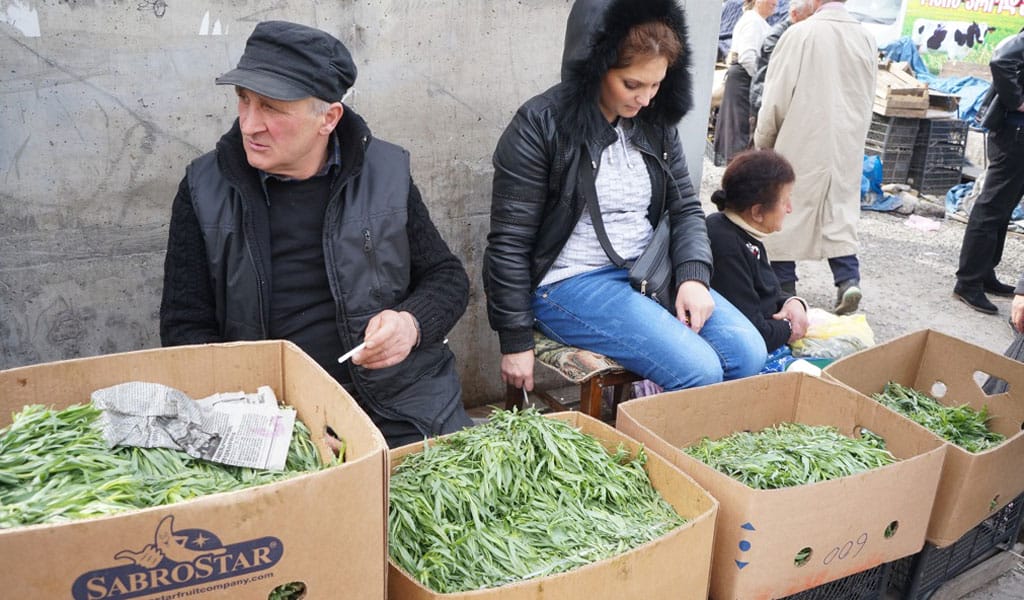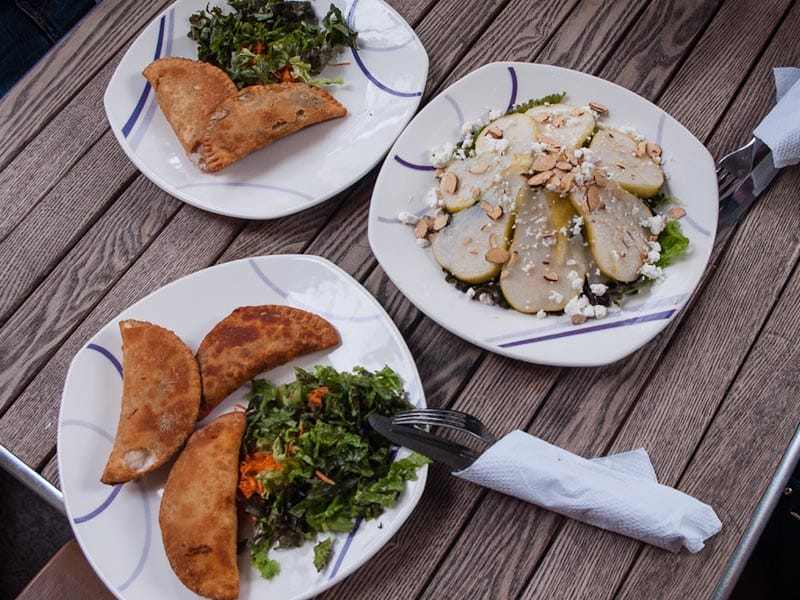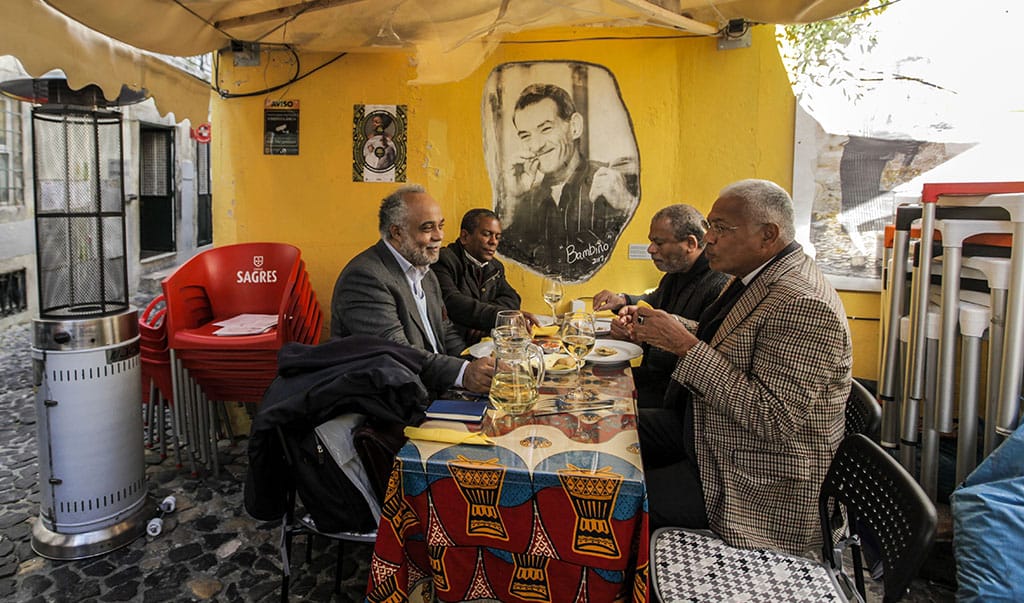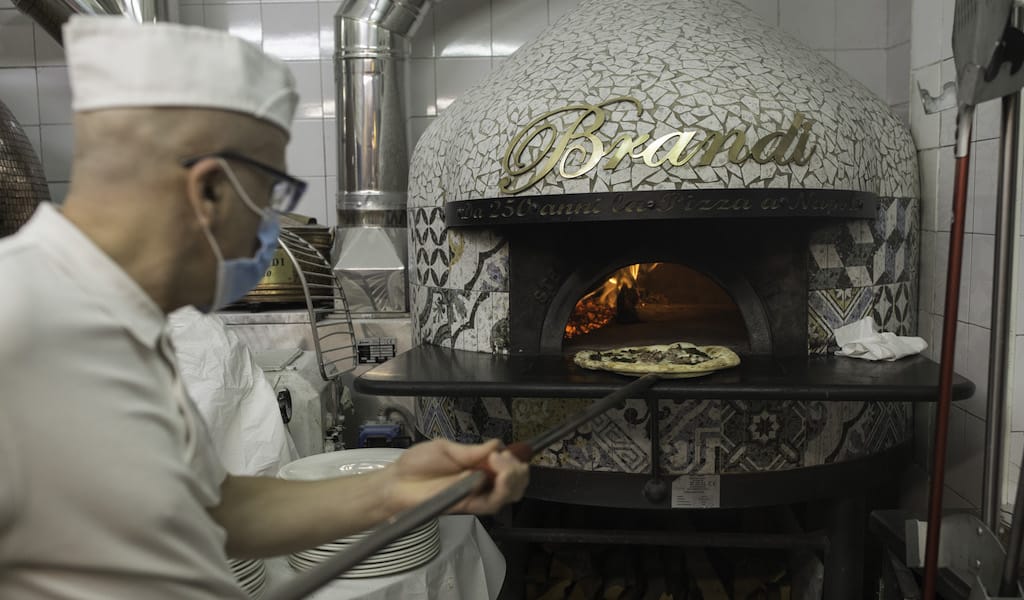At the cusp of winter’s end, men across Georgia balance on wobbly ladders and trim their grapevines. The clippings will be used later for baking bread in traditional tone ovens and for roasting mtsvadi, skewered chunks of pork, on the embers. Only after the trimming is completed throughout the land is springtime allowed to arrive. And when it comes, it does so in teasing bursts of bold flavors, juicy colors and luscious aromas.
The first indication of spring is the arrival of tarkhuna – tarragon – at the central bazaar, where we love to shop for produce. The vacant sidewalk section next to the apple vendors and cheese ladies waits all winter for the tarragon folks to turn up with their cardboard boxes loaded with the emerald green herb clipped in flat bunches, which they sell for about 15 cents a pop.
This magnificent herb, packed with vitamins C, A, and B-complex relieves stomachaches and menstrual pain, stimulates the appetite and reduces high blood sugar levels. It is one of Georgia’s most beloved herbs and is used in a wide variety of ways. In fact, Georgians love tarragon so much, they make an absinthe-green soda pop flavored with it that was popular in the USSR.
Restaurants often serve tarragon with an assortment of other fresh greens, including scallions, parsley, radishes, water cress or sorrel. No oil or dressing: we munch the stuff like goats at a table, and the body responds with a succession of internal high-fives, as the rush of the herbal antioxidants enter the bloodstream.
In pretty much every hole-in-the-wall khachapuri snack bar, you will find gvezeli, a pastry stuffed with rice, minced beef, hard-boiled egg, scallions and tarragon. The anise-like zap of the tarragon can really surprise taste buds unaccustomed to bold adventure, but then you will find little subtlety in Georgian cuisine.
Tarragon and mushrooms enjoy a particularly intimate relationship and are cooked together in a variety of ways. In Kakheti, Georgia’s famed wine region, it is popular to sauté wild oyster mushrooms and tarragon with various spices or with the addition of egg. Tapamstvari is a recipe that adds cheese, coriander and hot green peppers to the equation.
Stuff a trout with lemon slices, minced scallions and a sprig of tarragon and you’ll have the specialty shemtsvari kalmakhi.
However, no dish is more representative of Georgia’s tarragon love or springtime than chakapuli, which is only prepared after Easter, when the first plums appear on the trees. It is a heroic medley of lamb or veal chops stewed in perfectly unripe sour plums, fresh tarragon leaves, white wine and a plethora of fresh herbs such as parsley, mint, dill, cilantro and garlic that we have waited all winter to indulge in.
Editor’s note: It’s Spring Week at Culinary Backstreets, and we’re celebrating the arrival of warm-weather eating with seasonal dispatches from all over.
Published on April 18, 2017
Related stories
September 26, 2013
Mexico CityUpdate: This spot is sadly no longer open. On a quiet street in Cuauhtémoc, just blocks away from some of Mexico City’s most recognizable landmarks, a slick, colorful sign and unusual name – Comichurros & Empanadas – call out loudly for attention. Inside, the place buzzes with youthful energy and social media and branding savvy:…
August 25, 2017
LisbonLisbon’s communities from Portugal’s former colonies provide the strongest link to the country’s past, when it was the hub of a trading empire that connected Macau in the east to Rio de Janeiro in the west. Though integral elements of Lisbon life, these communities can sometimes be an invisible presence in their adopted land, pushed…
November 9, 2021
NaplesIt is 1760 and on the throne in Naples is King Ferdinand IV. Pietro Colicchio has opened Pizzeria di Pietro e basta così, and the name says it all: “Pietro's Pizzeria and that's enough.” A restaurant strictly selling pizza, it will become known as one of Naples’ first pizzerias. As we move into the 19th…
















































































